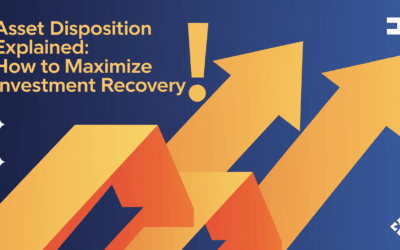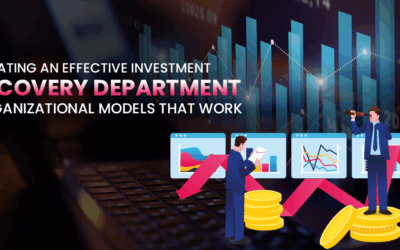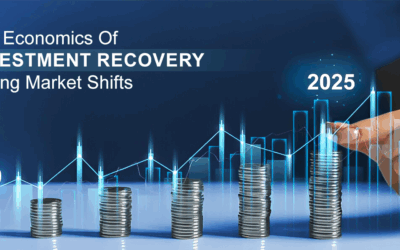Hello Sustainability 2022!
The importance of sustainability for consumers and organizations has only been growing…and getting bigger. Who is driving this “sustainability is in demand” movement? Mostly younger consumers who are making purchasing decisions in favor of sustainable products and the companies who embrace sustainable operations. But that’s just part of the big picture in sustainability trends as we turn the corner into 2022.
We are all looking ahead to a more positive future—emboldened with fewer pandemic-triggered problems and a robust economy. And topping everyone’s ‘to-do’ list for 2022 is a renewed focus and energy on promoting sustainability for businesses and consumers alike. With 2022 on the horizon, we are poised to make sustainability a top action item for both business growth and consumer action.
We need systematic change, bold ideas, and radical rethinking of how industries and consumption work – so how are we going to get there? First and foremost are two trends that are charting a course for all other trends.
In terms of business according to McKinsey research, companies with high ESG (environmental, social, and governance) ratings outperform the market average in both medium and long-term earnings. Consumers? They have declared their shared stewardship of our planet’s future that was now driving their everyday purchasing decisions.
With these two overarching factors in mind, ASSET 2.0 has researched leading ESG experts and resources to come up with the top sustainability trends to put on our radar for 2022 and beyond.
1. Data in the driver’s seat
As every IR professional knows, organizations are challenged with the daunting task of measuring the impact of sustainability efforts. Data analytics is increasingly being used to ensure businesses are getting results from their ESG initiatives. Sustainability analytics can help companies reduce resource use, making them less vulnerable to price and supply volatility. It can also help them anticipate future changes in supply, demand and price, so they can hedge their resource purchases and lock in supplies at lower prices.
Professor Tai-Yuan Chen at Hong Kong University of Science and Technology Business School stated, “It’s not enough for leaders to incorporate the concept of sustainability—they also need to execute their ideas based on the data.”
And here’s a perfect example of how data is measuring sustainability and cutting operational costs—Pirelli Tires based in Italy. The company compiles usage data recorded by sensors in its tires to make more efficient decisions about what inventory to stock, avoiding waste.
Telecom companies are utilizing data to measure service technician effectiveness. Data can be used to target which service calls require additional service calls. Mitigation efforts such as enhanced training and new tools can then be applied to reduce the number of repeat service calls—translating to fewer trucks on the road.
Companies are now using data to determine the most sustainable and cost-efficient transport system. Data proved that by switching from truck freight to rail they could save money and help save the planet. Moving freight by rail is 4 times more fuel-efficient than moving freight via trucks on the highway.
2. Demand for sustainable products will become standard

Thanks to Gen Z, sustainable products are one of the hottest sustainability trends. Gen Z is the newest generation with nearly 68 million in the U.S alone. Today’s youth are acutely aware of climate change and the loss of biodiversity – and are doing something about it. (Check out ASSET2.0 VOL.5 on teen scientists who are saving the planet.) In the coming months and years ahead, the demand for sustainable products will be mandatory. More than any other generation, research suggests that 54% of these young adults think a company’s environmental and social efforts are very or extremely important when making a buying decision – whether product or service. Their increased purchasing power will only grow more powerful as they join the workforce, so organizations have another reason to bolster ESG goals.
In particular, look for more sustainable products in the following sectors:
Food: Food production produces 26% of greenhouse gases and is a major cause of habitat destruction and freshwater consumption. According to Nielsen, sales of meat alternatives were up 140% in the US in recent years. Meanwhile, sustainable grocery delivery services like Imperfect Foods and Misfits Market, which sell flawed, yet viable products are gaining popularity.
Fashion: Research from Boston Consulting Group found that 38% of consumers switched clothing brands that have better environmental and social practices.
Lifestyle: Opting for electric vehicles, demanding sustainable or (less) packaging and digital communication (to save paper) will rise among consumers in the coming year.
3. Companies will be required by the government to disclose climate risks to the public
And the consequences? This will force big changes for companies in their share prices, financing options, and attracting investors. Transparency will promote scrutiny and activism by shareholders while consumers, especially the younger generation, will pay close attention and make their purchasing choices accordingly.
Europe is already on board, but what about the US? Companies from a broad cross-section of industries are asking the Securities and Exchange Commission to regulate climate risk reporting, but with one catch: They want to be shielded from legal liability tied to their disclosures. The bottom line reality is this: Companies that are already demonstrating how well they are mitigating risks and contributing to social and environmental well-being are showing greater success.
According to McKinsey’s research, companies with high ESG ratings outperform the market average in both medium and long-term earnings.
4. Renewable energy and the common ground solution
The transition to renewable energy will also impact organizations in 2022. Yes it’s gaining ground but there’s a big demand gap it can’t currently bridge.
Renewable energy generation is growing—expanding by 7% in 2020, and 8% in 2021 according to an International Energy Agency (IEA) report. However, this growth isn’t enough to keep up with global demand, and the gap could challenge businesses to be more efficient with energy use. The shortfall between renewable energy supply and power demand will only widen as economies reopen and travel resumes, with demand already spiking to pre-pandemic levels. A “common ground solution” would be to use traditional fuels as a backup when renewables aren’t readily available.
“The global power market is experiencing rapid power demand growth as markets recover from the pandemic. Despite all the capacity additions in renewables generation, the amount of power currently generated by renewables is still not enough to meet this increased demand,” Matthew Boyle, manager of global coal and Asia power analytics at S&P Global Platts, told CNBC.
5. Electric Utilities will face increasing pressures to re-invent themselves
2021 proved to be an enormous challenge as heatwaves across the nation tested grid reliability. And then came the passage of the Infrastructure Bill that includes $73 billion to be invested in upgrading the nation’s power grid, including installing thousands of miles of transmission lines. The plan also includes measures that would likely expedite the permitting process for transmission lines, which can take decades. But in the near future, expect to see utilities exploring new sustainable business models that use microgrids, smart grid technology, distributed energy resources (DERs), and energy storage to build stronger and more intelligent services. By integrating sustainability into today’s utilities, they will be empowered to reinvent their businesses, forge new alliances, and collaborate across industries to generate value for stakeholders, society and the planet.
Sources:
https://www.pebblemag.com/magazine, “Sustainability Trends That Will Change 2021 and Beyond,” Oct. 3, 2021
https://www.businessbecause.com/news/mba-jobs/, “5 Sustainable Business Trends to Watch in 2022,” Oct. 22, 2022
https://www.energywatch-inc.com, “10 Sustainability Trends to Watch in 2021-2022,”
https://www.vegconomist.com/environment, “Sustainability is Now Consumers Biggest Concern Overtaking Personal Health, “ Oct. 18, 2021
https://www.bcg.com/en-us/publications, “Six Steps to a Sustainable Transformation,” Aug. 31, 2021
https://www.reconinsight.com/blog, “Sustainability and Business Analytics Challenges & Examples,” Jan. 30, 2020
https://www.accenture.com/us-en/insights, “Taking Charge: Utilities Lead the Way to Net Zero,” Jun. 4, 2021



